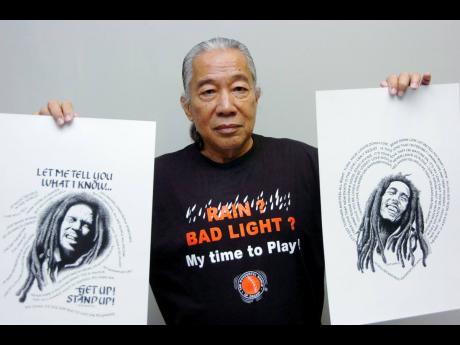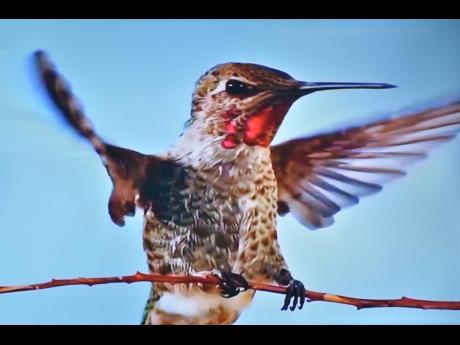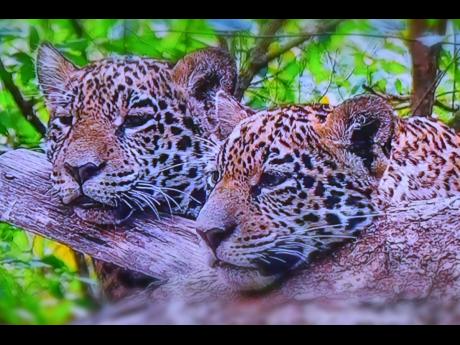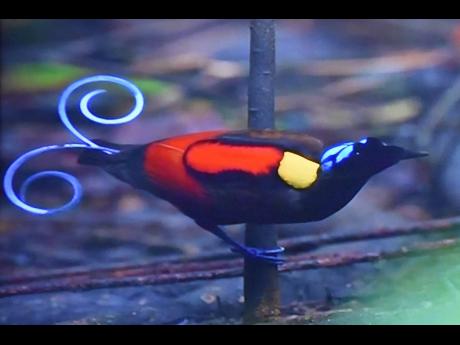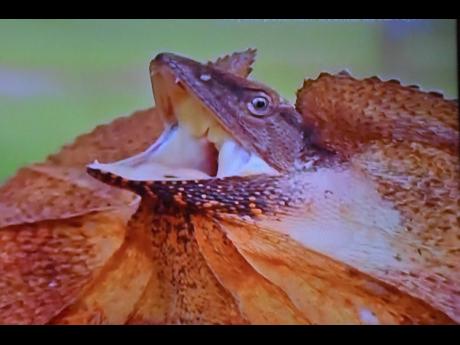Pandemic changes perspective
Veteran photographer Howard Moo Young taking pictures in unexpected ways
Jamaican artist Howard Moo Young is a national treasure. The talented and sought-after artist and photographer is well known for his photography skills and has earned the respect and admiration of many, both locally and overseas.
Amid the coronavirus pandemic, persons have been searching for ways to connect with one another despite not being able to be together in person. Many are also seeking ways to give back to their communities.
Moo Young has been taking photographs in an unexpected way while maintaining a safe distance. On a mission to make photographs great once more — especially in a pandemic — he has created unusual images that make a statement from the comforts of his living room.
“To photograph or not to take photographs, that is the question. A question that I have asked myself many times during this lockdown of COVID-19. This virus has taken a toll on everything, including photography. It has caused many a photographer to hang up their cameras and virtually stop shooting images,” Moo Young said.
Staying at home, he said, has also helped him to discover a new source of images that were always in front of him, but he never saw them.
“My flat-bed television screen … Can you imagine having a collection of animals, birds, hummingbirds, butterflies, reptiles, bees, fish and sea creatures, beautiful pictorials at my disposal from any country in the world right there on Animal Planet, Discovery, National Geographic, CNN, BBC, etc?” Moo Young asked.
“I don’t have to visit the zoo, hire a tour guide on a safari, or take a jungle trail. I stay right there in my room and take these still photographs from various documentaries. No COVID threat,” he added.
Moo Young, the man responsible for the now-famous photograph of reggae legend Bob Marley standing between and holding the hands of then Prime Minister Michael Manley and Edward Seaga at the 1978 One Love Peace Concert in Kingston, has decided to take the ‘jab’ that has somewhat eased his personal sense of freedom and enabled him to revisit some of his favourite spots again.
“Certainly, at my age, I have nothing to lose,” Moo Young said, adding that now he can really focus on his photography and not the threat of the pandemic. “I am now at ease to concentrate on composition, lighting, angles, colour and everything else it takes to capture that elusive image, without worrying,” he said.
Being vaccinated, he said, doesn’t mean he is going to break protocols, but it has freed his mind to really concentrate on his photographs. “The choice is yours, so make it wisely. I have met many photographers who have come to a complete stop,” Moo Young said.
“I am so happy that gone are the days when I had to buy rolls of film. I now shoot digitally, cancel what I don’t want over and over again, and it doesn’t cost me a cent. A photograph a day will help improve your vision and your images,” Moo Young added.
Moo Young said while at home, he has now perfected the exposure and speed, eliminated the icons, and edits each image in his camera as he continues to prepare an educational collection for various audiences in honour of his Creator.
Moo Young has distinguished himself as one of Jamaica’s finest artists and has reaped the kind of success that courts hard work and commitment. His achievements are exhaustive, stretching well beyond the space provided here.
“We are, in our own way, often either blind or oblivious to the things around us. We frequently possess tunnel vision. By that, I mean we may see only the potholes in the road before us, but fail to notice the buttercups that grow by the wayside,” Moo Young said.
The camera, he said, is merely an instrument for recording what one sees, and not accurately so. But it is the very best instrument modern technology has developed for that purpose to date. Today it is accessible with a point-and-shoot, SLR camera or even your latest digital cell phone.
“We see no more than 30 degrees in many cases simply because we fail to look. Our minds may be somewhere else, our attention so diverted and concentrated upon something totally removed from the present environment that it’s impossible for the imprint of this image to register upon the mind,” he added.

